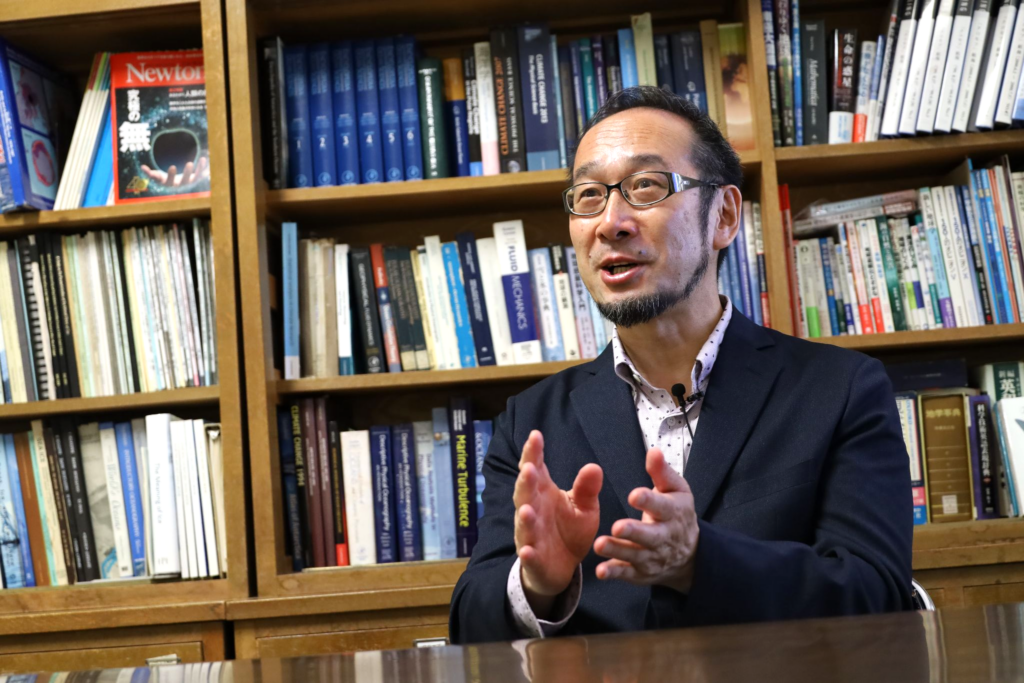Understanding the mechanism and impact of sea ice reduction
Research Highlight | December 21, 2022
This article first appeared in the special feature Understanding the Impact of Climate Change.
15 questions for climate change researcher Dr. Ohshima (with subtitles).
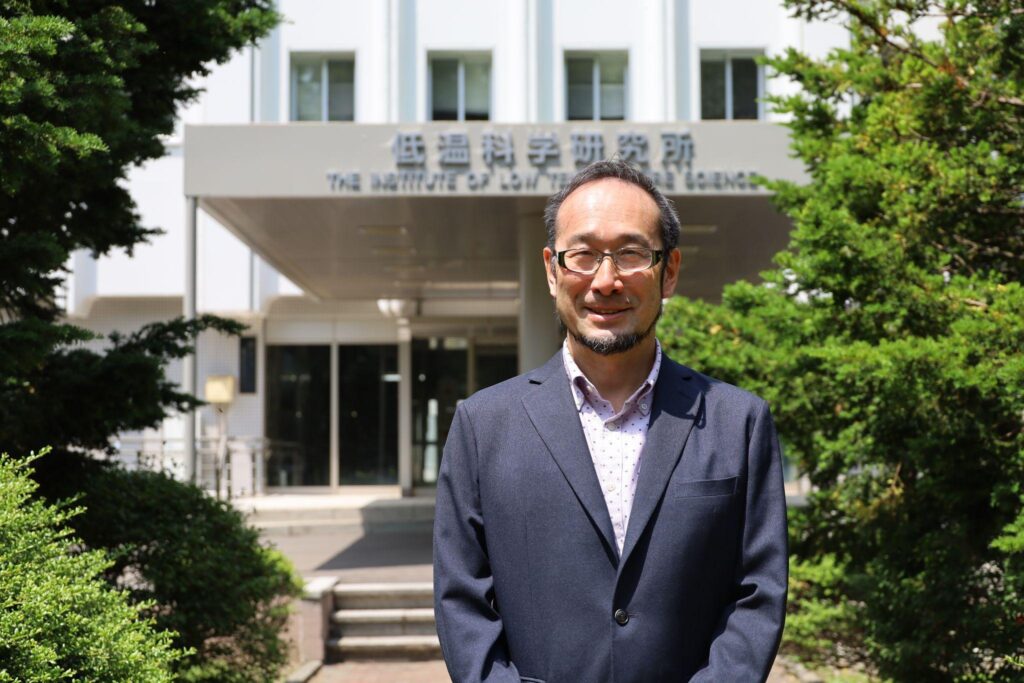
Professor Kay I. Ohshima
Institute of Low Temperature Science, Hokkaido University
(Photo by Manami Kawamoto).
Professor Kay I. Ohshima studies sea ice formation and its role in the Antarctic Ocean, Arctic Ocean, and Sea of Okhotsk. He spoke about the impact of sea ice on the global circulation of the ocean, biological production, and climate change.
Sea ice formation drives global ocean circulation
Sea ice forms when the sea surface cools in cold regions such as the Arctic and Antarctic Oceans. Unlike fresh water, seawater contains salt and freezes at approximately minus 1.8 degrees Celsius to form sea ice.
Sea ice is produced most actively around Antarctica and this large-scale ice formation is known to drive the global ocean circulation. Why? When sea water freezes, it generates “dense sea water” that contains high salt content while the sea ice itself contains less salt. Since this cold, dense sea water is heavy, it moves downward driving the large-scale water circulation.
This sinking of water makes the starting point of the ocean’s great circulation, which circles the globe taking 1000 or 2,000 years. Since the ocean has an overwhelmingly large heat capacity compared to the atmosphere, changes in ocean circulation are thought to have a significant impact on the Earth’s climate.
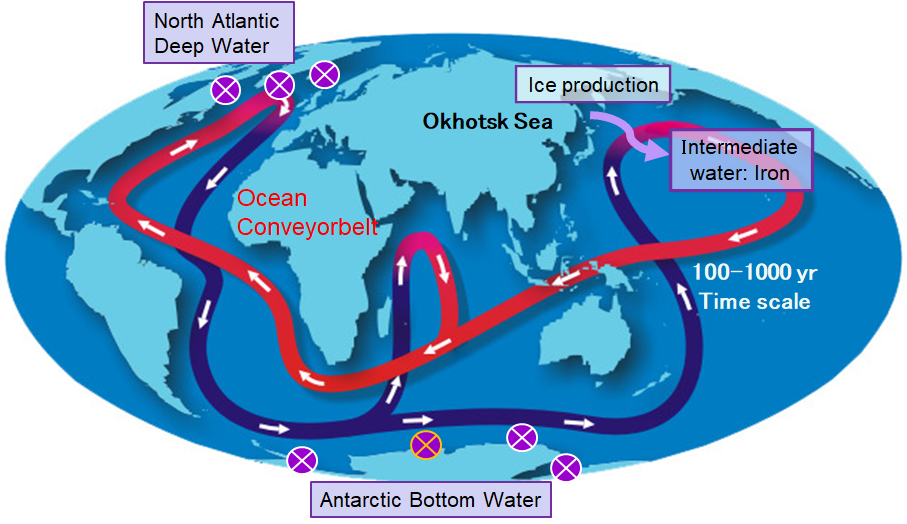
Sinking of sea water occurs in a large scale in the North Atlantic and along the Antarctic coast, where large amounts of sea ice are produced, causing a global overturning circulation (Modified from NOAA/NASA).
Sea ice formation in rapid decline
Sea ice formation and the production of cold, dense water has been decreasing in recent years. Our long-term observations have revealed that this is occuring in the Sea of Okhotsk in the North Pacific as well, weakening the ocean circulation. The sea ice extent in the Sea of Okhotsk has decreased by about 30% over the past 40 years, and the amount of dense water has also decreased by about 30%.
The upwind region of the Sea of Okhotsk is the coldest part of the Northern Hemisphere and is very vulnerable to the effects of global warming. Although this change normally takes place over a long period of time, global warming is currently progressing at an unprecedented rate, so changes in sea ice and ocean circulation also need to be monitored closely.
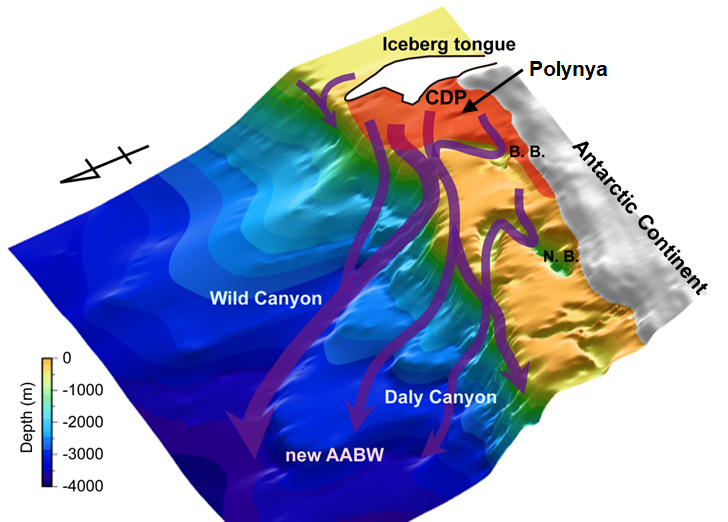
The mechanism by which Antarctic Bottom Water is formed as a result of high sea ice production off the coast of Cape Darnley, Antarctica. A large amount of sea ice is formed downstream of the iceberg tongue that extends out from the Antarctic Continent, creating an area of high ice production (polynya). This sea ice formation produces heavy water, which sinks to form the Antarctic Bottom Water (AABW).
Will sea ice decline affect fisheries production?
Declining sea ice has a significant impact on more than just ocean circulation. When cold seawater sinks, nutrients also sink with it and are circulated throughout the ocean. If sea ice production is reduced, the transport of nutrients such as iron, which is important for biological production, might be also weakened, which could potentially affect fishery production.
It is also becoming clear that sea ice itself transports nutrients. For example, when sea ice forms in the northern part of the Sea of Okhotsk, it takes in iron and other marine sediments. As that sea ice flows southward and melts, it releases iron and other substances. This triggers a massive increase in phytoplankton (blooming). Since phytoplankton is the starting point of an ecosystem, its proliferation (blooming) will have a significant impact on the overall biological life and even fisheries production. Therefore, a decrease in sea ice production due to global warming could affect biological and fishery production.
Our research cannot directly provide solutions to these problems. However, I would first like to be able to show what kind of system the earth is working under and what kind of changes are expected in the future. Then we will be able to take appropriate policies and measures. This kind of research requires collaboration with researchers in chemistry and biology as well as physics, so Hokkaido University is a very good environment for research because it has excellent researchers in each field. The Sea of Okhotsk, the southern limit of sea ice, is also very accessible, making Hokkaido University ideal for sea ice research.
Satellite observation and field observation complement each other
Our research combines in situ and satellite observations. Satellite observations can tell us quite a bit, but it is very difficult to observe below the sea surface, because electromagnetic waves would not penetrate into the seawater. Therefore, we go to the site and deploy a measuring instrument. The instrument uses ultrasonic waves to measure such things as the velocity of the ocean currents, and we retrieve the instrument one or two years later to analyze the data. Satellite observations, on the other hand, allow us to understand the actual state of sea ice globally, including areas where on-site observations are difficult. We use satellite observations to narrow down the location of high sea ice production, and then go out to those areas to conduct on-site observations. In fact, we found a place near the Japanese Syowa Station in Antarctica where a large amount of sea ice was produced through satellite observations, and following a year of on-site observations, we were able to discover a new bottom water formation area in Antarctica.
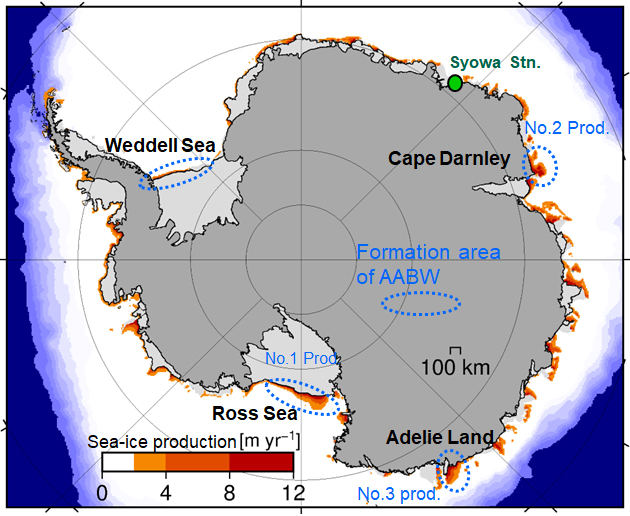
Map of annual sea ice production in the Antarctica Ocean, revealed by satellite observations. Professor Ohshima’s team discovered a large sea ice production area off the coast of Cape Darnley (top right), east of Showa Station, and discovered from on-site observations that this area was an unknown Antarctic bottom water formation area.
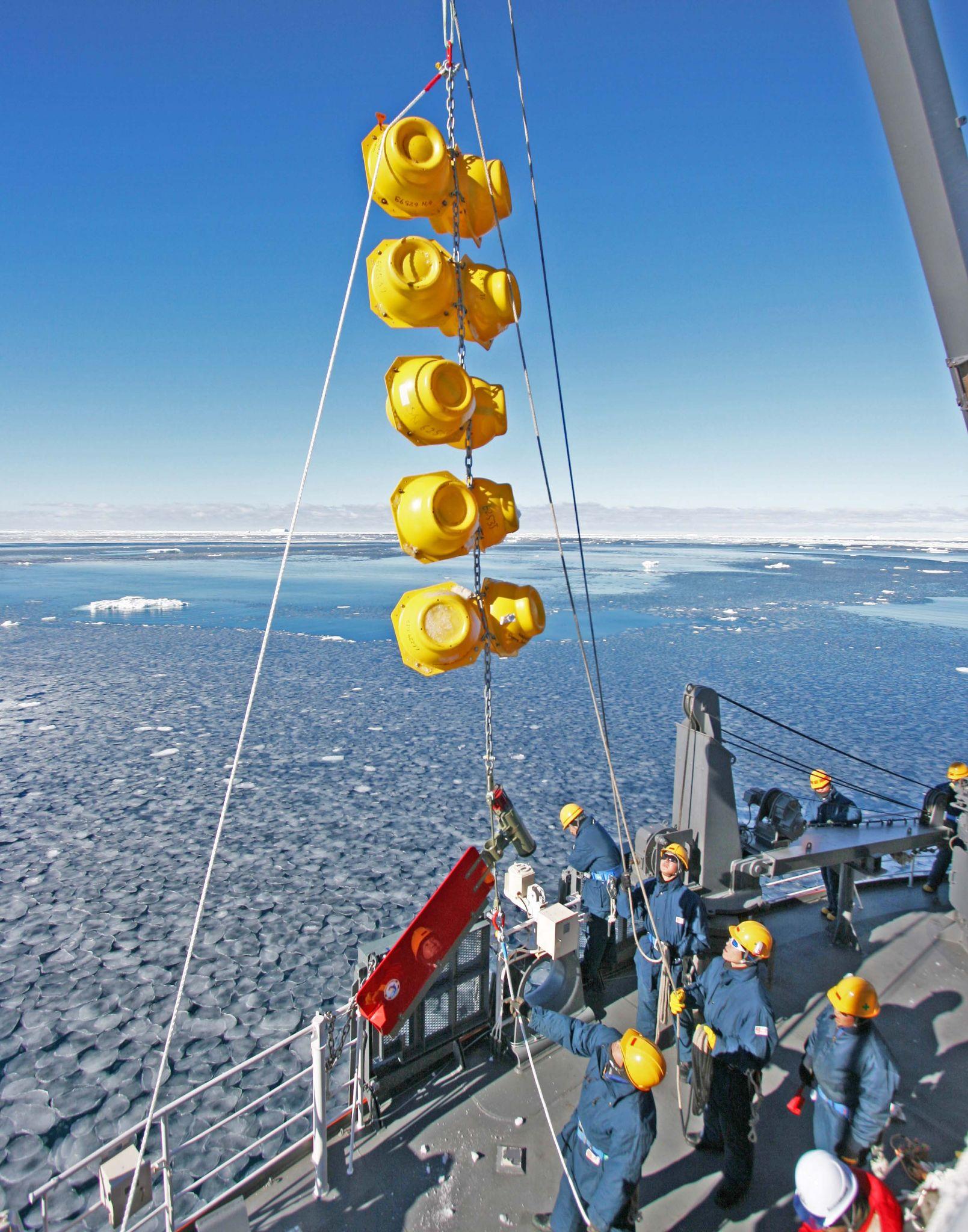
Installation of observation equipment from the icebreaker “Shirase” during an Antarctic expedition, off the coast of Cape Darnley, Antarctica (Photo provided by Keigo Asano, 2011)
Mechanisms that accelerate Sea Ice melting
Our research has also revealed the mechanism by which sea ice melting causes further sea ice melting. Sea ice is white, which reflects solar radiation. However, when sea ice melts in areas of the Northern Hemisphere where global warming has a large impact, the area of exposed sea surface increases. The sea surface is dark; hence,it absorbs solar radiation and heat. This heat further accelerates the melting of sea ice. It is a feedback loop accelerating the loss of sea ice.
The pleasure of on-site observation
I originally specialized in geophysical fluid dynamics. I used mathematical equations and computer simulations to study ocean current fluctuations, meandering, and eddy. My research focus on sea ice and cold seas began when I took a job at the Institute of Low Temperature Science at Hokkaido University. I was required to join the Japanese Antarctic Research Expedition a few years after I was hired, and that was when I also entered the world of field observation. My research methods changed from the theory and simulation in an instant.
While I am observing in the field, I am so focused on my observations that I don’t have much time to experience nature. However, during the Antarctic wintering expedition, I was there for a year and a half, so I felt many things. It is hard to put into words, but there were many times when I was overwhelmed by the beauty and scale of nature, such as the beauty of the aurora borealis dancing in the sky and the dynamic glaciers that I witnessed from the Cessna airplane. I have been to many places since then, but I don’t think I have seen anything better.
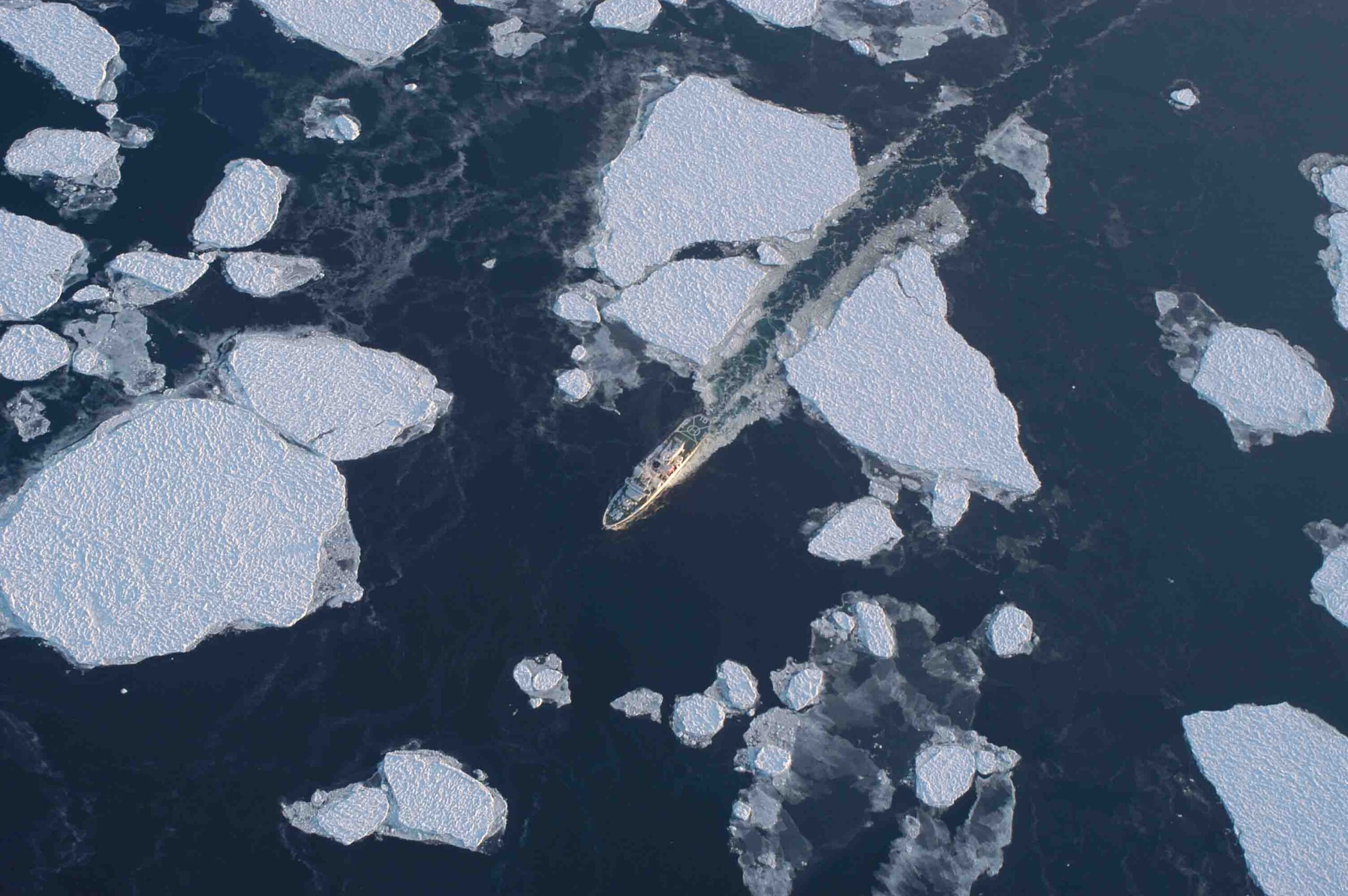
The icebreaking patrol vessel “Soya” breaking up sea ice, photographed from above. Sea of Okhotsk (Photo by Kay I. Ohshima, 2015)
What is really interesting to you?
I would like young people to aim for their own unique research. It feels safe to go in the direction that everyone else is going, and we tend to do that. However, I think it is also possible to determine what is truly interesting and valuable to yourselves and go in directions that others are not going. There are treasures to be found in the places where others don’t go. The moment of discovery is a joy that cannot be replaced by anything else.
Many people study ocean circulation and atmospheric circulation, but the role of sea ice is not well understood. I believe that sea ice is involved in both ocean circulation and climate change, and I would like to clarify its global mechanism. I would like to clarify each missing piece and use it to predict future climate change on Earth.
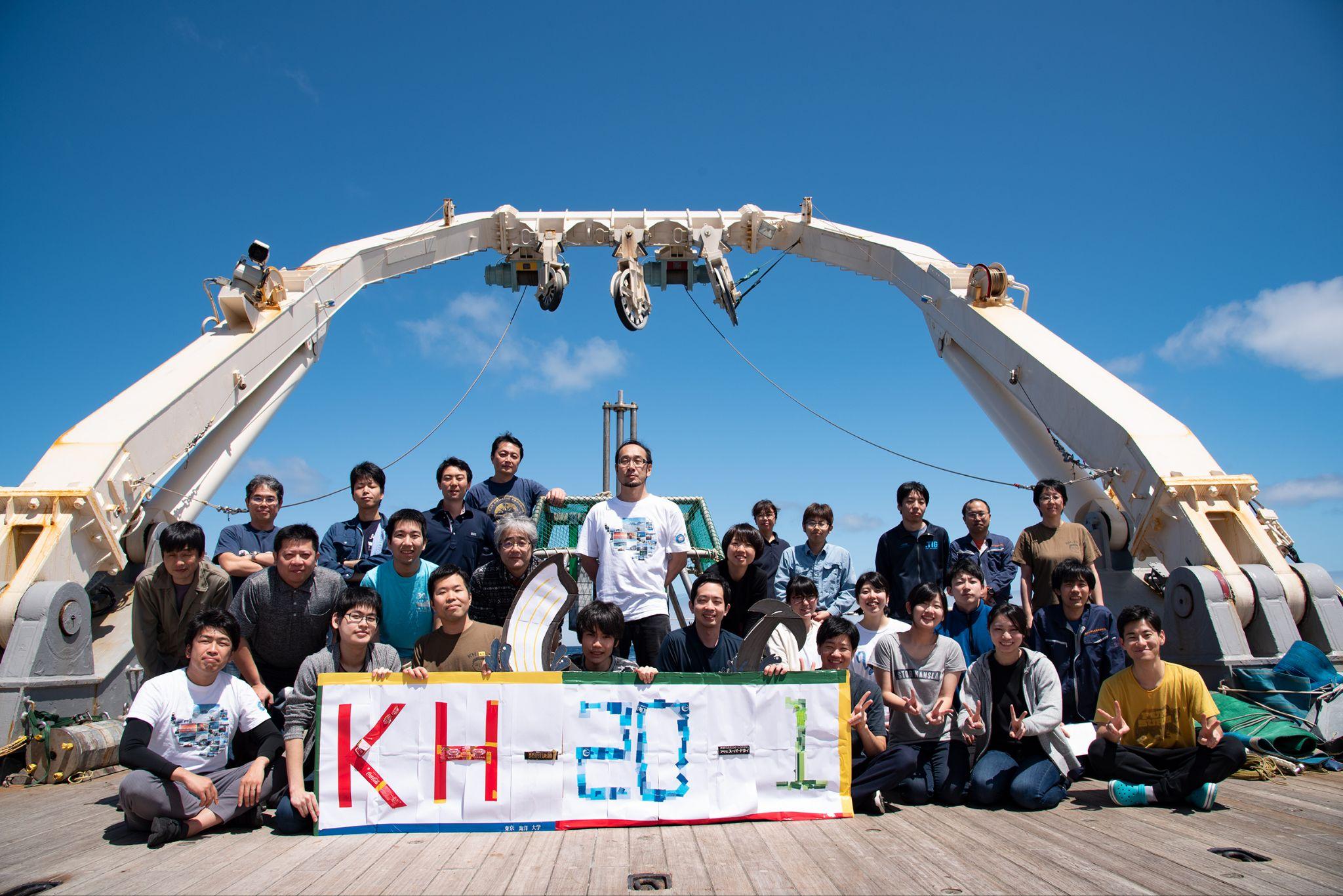
Members of the Hakuho Maru Antarctic Ocean Voyage with Professor Ohshima (white T-shirt standing in the center). (Photo provided by Kay I. Ohshima, 2020)
The Expedition that Changed My LifeThe research in the Japanese Antarctic Research Expedition took a long time, and in my case, I didn’t directly achieve great results, but it was an unforgettable life experience. One of the things I learned was “arrangement”. I had been “the guy who can’t change lanes,” to use an analogy, but I learned to observe and study with an image of what was to come. In the field, weather can change or various other occurrences can happen, so you have to make a first backup plan and a second backup plan. In fact, when we were unable to enter the target area due to a large amount of sea ice, we installed instruments at the location we had considered as a backup and observed there for a year, which led to the major discovery — the Antarctic bottom water production area. You really never know what will turn out to be a blessing. |
Written by Naoki Namba
Part of the special feature Understanding the Impact of Climate Change

